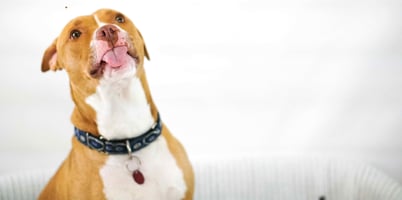Are you looking for an easy way to teach your puppy to sit? This article will provide you with a...
How to Teach a Puppy Not to Bite
Teaching a puppy not to bite is essential for a happy and healthy relationship between the pet and its owner. It can be a difficult process but with patience and consistency, you can teach your puppy not to bite. This article will provide an overview of how to train a puppy not to bite, including the use of positive reinforcement and discouraging biting behaviour.
Understand the Reasons Behind the Biting
Before you can begin to teach your puppy not to bite, it is important to understand why they are biting in the first place. Puppies bite as a way of exploring and understanding the world around them. They may also be expressing excitement or trying to play. It is also important to note that some breeds are more prone to biting than others.
It is important to remember that biting is a normal behaviour for puppies and should not be punished. Instead, it should be redirected to more appropriate activities.
Redirect the Biting
Once you have identified the reason behind the biting, you can begin to redirect it. Redirecting the biting means teaching your puppy to bite something else instead. This could be a toy or a chew item. Every time you catch your puppy biting, redirect it to an appropriate object.
You can also use positive reinforcement to encourage the desired behaviour. Offer treats or praise when your puppy bites a toy or chew item instead of your skin. This will help to reinforce the desired behaviour.
Discourage Biting Behaviour
In addition to redirecting the biting, you can also discourage biting behaviour. If your puppy bites you, you should immediately stop the interaction and walk away. This will teach your puppy that biting results in the end of the play session. You can also use verbal cues such as “No bite” or “Gentle” to discourage biting.
Provide Chew Toys and Exercise
Providing your puppy with plenty of chew toys and exercise can also help to reduce biting. Chew toys provide your puppy with an appropriate outlet for their biting behaviour and can help to redirect it. Exercise can also help to reduce biting as it helps to tire out your puppy and reduce their energy levels.
Be Consistent
When teaching your puppy not to bite, it is important to be consistent. It is essential to always respond the same way when your puppy bites. If you do not respond consistently, your puppy may become confused and the behaviour will not improve.
It is also important to be patient with your puppy. Training takes time and it may take several weeks or months before your puppy learns not to bite. However, if you remain patient and consistent, your puppy will eventually learn not to bite.
Seek Professional Help
If your puppy’s biting behaviour does not improve despite your best efforts, it may be time to seek professional help. A professional trainer or behaviourist can help to identify the underlying cause of the behaviour and provide you with the appropriate advice and techniques to address it.
Conclusion
Teaching a puppy not to bite is an important part of responsible pet ownership. With patience and consistency, you can teach your puppy not to bite. Understanding the reasons behind the behaviour, redirecting the biting, discouraging biting behaviour, providing chew toys and exercise and seeking professional help can all help to reduce biting behaviour.



